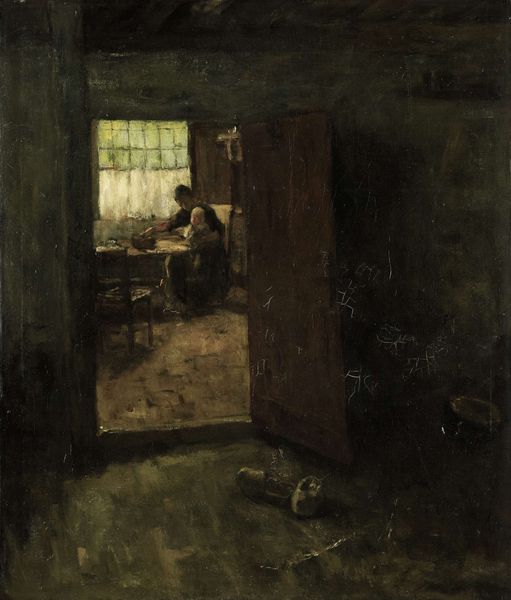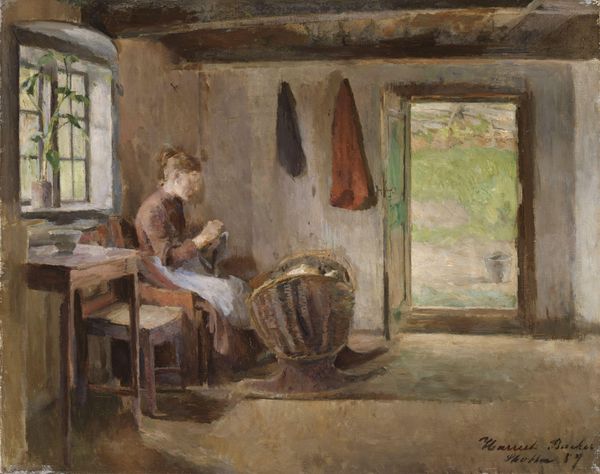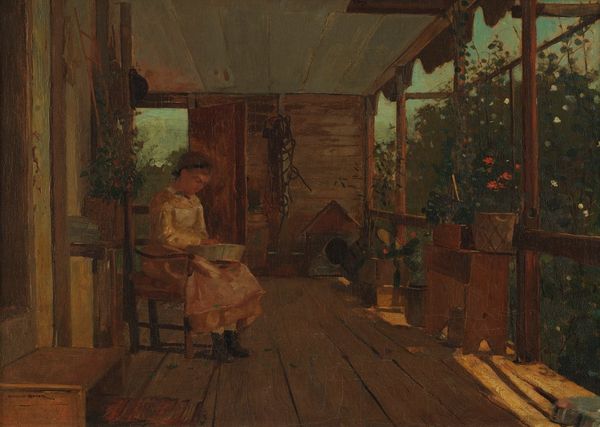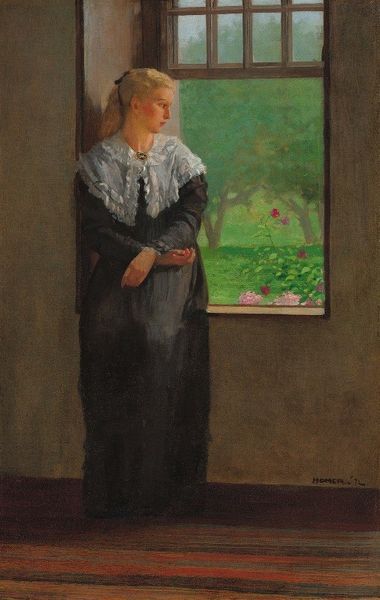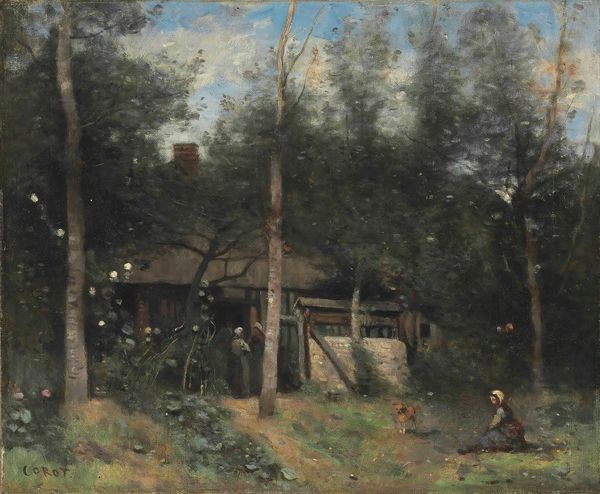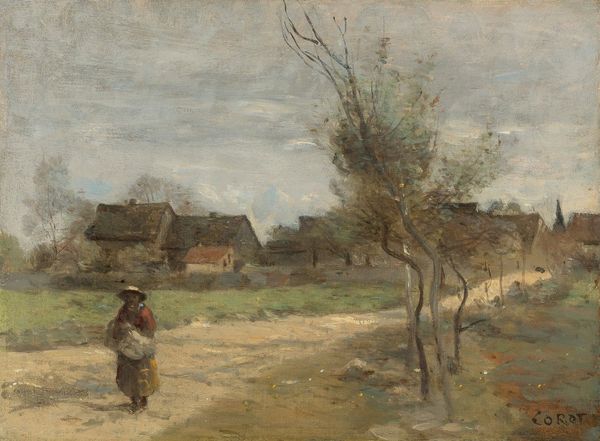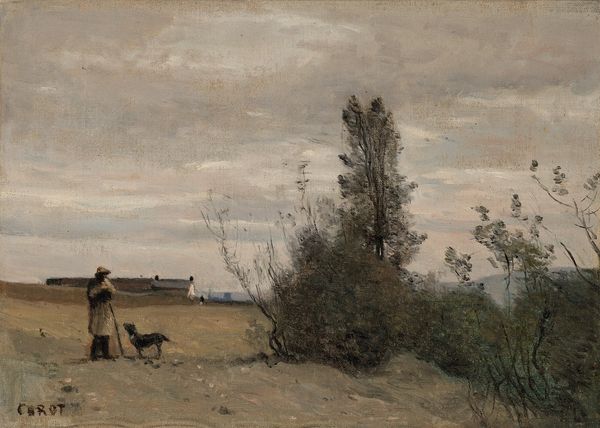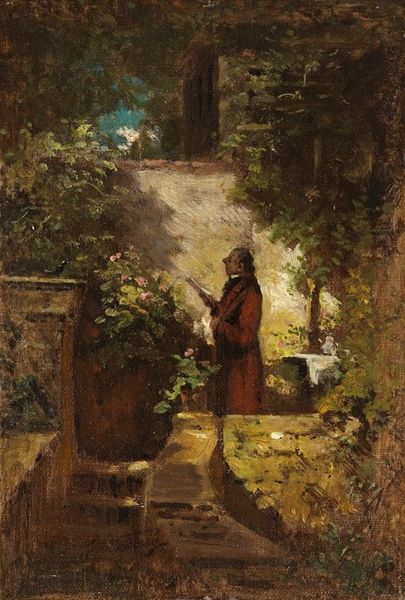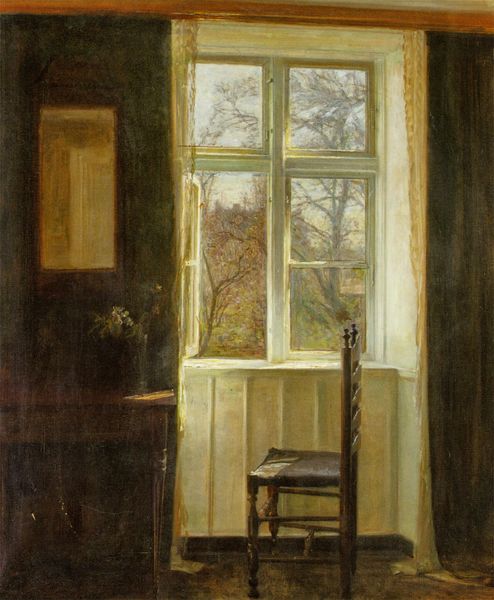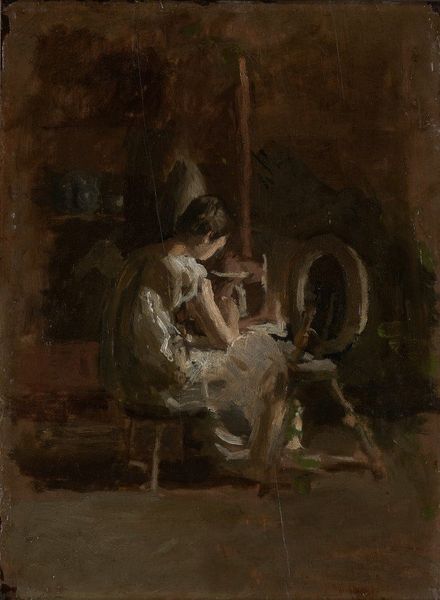
Copyright: Public Domain: Artvee
Curator: Jozef Israëls, a prominent figure of the Hague School, created this oil painting in 1905. It’s titled "A Laren Scene.” Editor: It’s immediately evocative of quiet solitude. The dark interior sharply contrasts with the light flooding in from the outside. Curator: The woman's figure, positioned just inside the doorway, anchors this intersection of shadow and light. She is holding some knitting work in her lap. It could be argued the domestic interior confines her; equally it appears safe, a space she owns within the broader landscape beyond. Editor: I’m fascinated by how Israëls manipulates the structural elements of the painting—the strong verticals of the door frame, the horizontals of the distant buildings, and the subtle diagonals in her posture. How do these formal choices affect the viewer? The dark, coarse brushstrokes seem to envelop and yet the eye finds an immediate relief as it seeks a vista in the garden setting. Curator: Beyond its aesthetic, this doorway itself becomes a powerful symbol. The Dutch Golden Age favored such visual signifiers to represent both spiritual enlightenment and domestic comfort. Israëls' woman appears introspective, framed by an openness that both invites and subtly excludes the viewer. What histories are evoked here? What stories could she be recounting, silently, as she contemplates her work? Editor: Indeed, Israëls carefully constructs the relationship between interiority and exteriority. Look at how the colors bleed into one another: the drab interior tonalities flow subtly into the brighter garden hues, the building merges with nature. Semiotically it evokes liminality. A feeling of being 'in between', perhaps? Curator: Exactly. These Dutch genre scenes aren’t simply glimpses into the past, but echoes of enduring values and personal states of being. The image's sustained presence testifies to a need to consider our sense of continuity between our own histories, the artist's, and the subject of the piece. Editor: I would venture that Israëls compels us to reflect on the complex relationships between light, shadow, and our own situated existence. How remarkable!
Comments
No comments
Be the first to comment and join the conversation on the ultimate creative platform.
